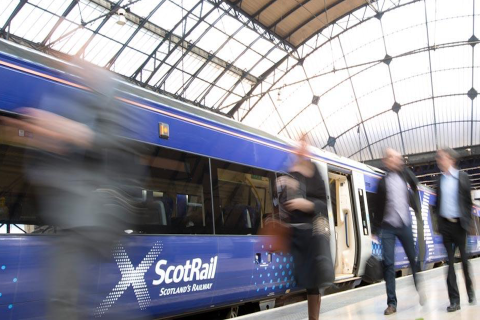Finnish Transport Infrastructure Agency’s puts emphasis on sustainable procurement

Influencing the reduction of carbon footprints within the railway infrastructure, the Finnish Transport Infrastructure Agency (FTIA) strategically integrates environmental criteria into its procurement processes. With a significant role as an infrastructure owner, builder, and maintainer, the FTIA ensures that environmental aspects are central to its procurement practices, thereby promoting wider environmental responsibility.
Last year, the Finnish Transport Infrastructure Agency, a major public procurer, executed around 3,000 purchases, underscoring its substantial impact on the infrastructure sector. Procurements at the FTIA are categorised, each with specific environmental criteria guiding contractor activities, particularly evident in construction site operations.
“What we require in environmental matters can be seen directly in the work of our contractors”, emphasises Pekka Petäjäniemi, director of procurement at the FTIA. Following last year’s preliminary study on environmental procurement criteria, efforts have focused on implementing these criteria across procurement categories. “The main thing in the implementation work is that the requirements are recorded in the model documents of the procurement contracts so that they will actually be used,” says Petäjäniemi.
Wider environmental considerations
Environmental considerations have long been integral to FTIA projects, encompassing noise, vibration, and groundwater protection. Recent expansions include issues related to species not native to the region, circular economy practices, and carbon emissions. Consequently, planning emphasises service providers’ capacity to incorporate carbon emissions and circular economy principles, ensuring alignment with market capabilities.
Contractors face stringent mandates, including measures against non-native species and material selection requirements. Collaborative efforts with industry stakeholders have led to the development of environmental standards for construction machinery and transport equipment under the Green Deal agreement with the Ministry of the Environment.
Measuring carbon emissions
While measuring and verifying carbon emissions pose challenges, the FTIA reports being actively enhancing metrics to support environmental objectives. Their plans include introducing emission-related metrics for construction and maintenance machinery this year, drawing inspiration from neighbouring Sweden’s procurement criteria, where contractors’ carbon emissions at construction sites influence project awards.
For context, in Sweden, contractors measure carbon emissions on-site, with bids evaluated based on both price and total emissions. Bonuses are awarded for lower emissions while exceeding emissions incurs penalties, illustrating a proactive approach to environmental stewardship within procurement practices.
Further reading:
- RailTech Europe ’24: Developing sustainable tendering for rail
- RailTech Europe ’24: Towards sustainable tendering for the railways
- Frecciarossa sustainability in numbers
- UK Rail industry applauds sustainable start up
- Zero Fuel offers absolutely nothing to rail industry
- SilverRail: Drawing passengers from planes to sleeper trains




